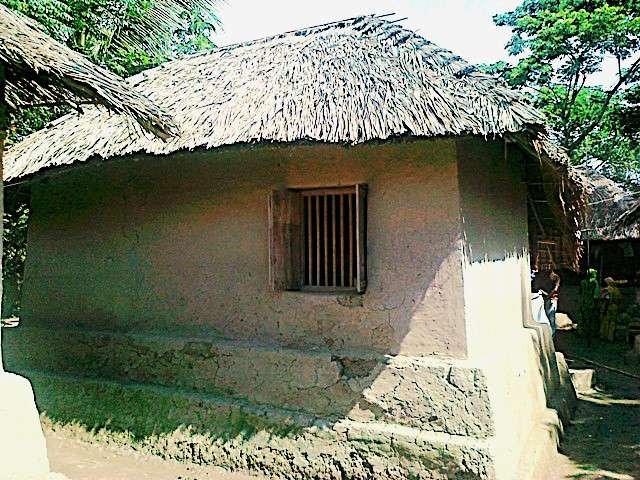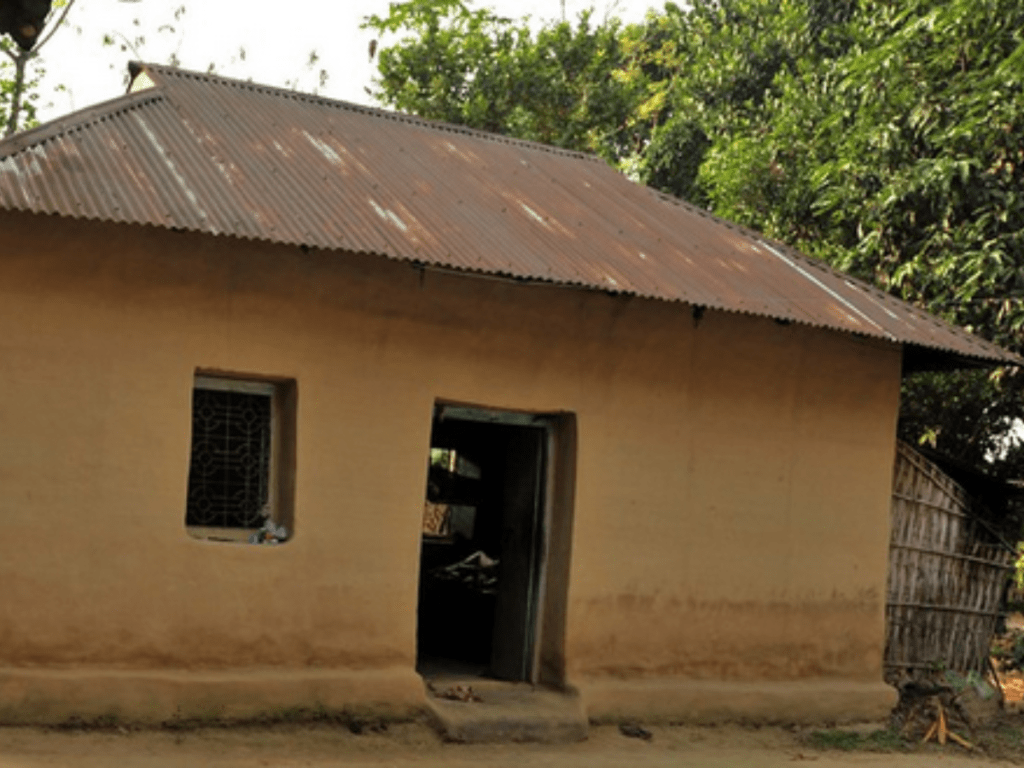The Hut Style House derived as a small home for living.Hut is a type of vernacular architecture because of their style of construction and the available ready materials like wood, stone, mud etc.
The hut style house is a traditional style of Bangladeshi village architecture for a long period of time.Its widely used in villages even sometimes in urban area in bangladesh. Because of its less complexity and cost compared to the other construction systems.
Read about Home Traditions Of Bangladesh
Table of Contents
A short History of the word ‘Hut’ that further popular as hut style house
The term “hut” often carries a connotation of primitiveness when referring to non-western style homes in tropical and subtropical regions. However, these dwellings are typically products of sophisticated local craftsmanship and advanced architectural techniques. Designed to maximize airflow and built from non-conducting materials, they excel in heat dissipation. Some prefer the terms “house” or “home” to better reflect their complexity and functionality.
In Western contexts, “hut” is commonly associated with simple wooden sheds. Additionally, the term has been adopted by climbers and backpackers to describe more substantial and permanent shelters. These range from basic bothies, which offer minimal shelter, to well-equipped mountain huts that may even include amenities like restaurants.
Historically, the word “hut” originated in the 1650s, derived from the French “hutte” (meaning cottage) of the 16th century, which in turn came from the Middle High German “hütte.” This likely traces back to the Proto-Germanic *hudjon-, linked to the Old English “hydan” (to hide), from the PIE root *keudh-. Initially, the term entered the English language in a military context. Variants of the word appear in numerous languages, including Old Saxon, Danish, Swedish, West Frisian, Middle Dutch, and Dutch. Even the Ukrainian “khata” points to its ancient lineage, suggesting potential Avestan or ancient Iranian roots related to the concept of a covering or hiding.
The Characteristics of Bangladeshi Hut Style House

There are some certain features of Bangladeshi hut style houses. A hut can be built as a temporary or permanent structure. The hut style house is generally used in all nomadic cultures around the world but in Bangladesh it has some unique characteristics They are described below-
Roof style: Bangladeshi Hut style Houses have a unique pattern of the roof.The cornice is much extended towards ground to negotiate the rain storm to protect the home.
Also the roof ridge is slightly arched at the middle part because of the material character. The roof is generally made with rattan, cane or bamboo. These are very tensile yet strong and very much bendable.In the native village the roof shits are usually made with rice grain tied up with bamboo strings.
Window : The window style of traditional hut style houses are a bit smaller than the modern ones. That is to protect rain storms naturally and works combinedly with extended roof cornice.
Door: the doors are not that big as modern door systems.There is a high bit at the bottom of the door , which is locally called ‘salami’. This feature is made to negotiate the rain water or low floods.
Higher House Plinth: the plinth level of the house is 2-3 feet higher from the land level to negotiate natural incidents like rain water, flood and harmful ground creatures.
Veranda: There is a very special character of Bangladeshi hut style house is the veranda runs around the house.It is a preparation space before entering into the house.
This space nicely buffers yet connects the outdoor space with the indoor space. Also negotiate the natural hazards like light storm, wind and heavy rain.
Construction system of Traditional Bengali hut style house
The traditional hut style houses in Bangladesh are generally build by the vernacular materials like clay, wood, rattan,bamboo and rice grains.
Layout & foundation: The first step is a hand placed layout on a piece of land then starts to pour hard and sticky sands to build the plinth.after gaining the desired plinth level the prime work is to make it sattle by tapping with heavy stone or something.
Bamboo Columns: The required bamboo posts are placed in uniform spans dug down into the soil by two to three feet deep. And having 10-12 feet height above the ground level. Then tie up the horizontal bamboo bars at 8-10 feet level.Once the framing has been done then proceed to the next step.
Wall Erection: The external wall starts to construct with the mud blocks similar to the brick work, the bonding material is generally the sticky sand clay.Once the wall is up to the roof level then it shifts to the plaster work. The plaster works generally done with the send clays all around the house both internally and externally.
Roof construction: The roof is constructed, as mentioned earlier, with the bamboo or rattan frames.Then decent size rice-grain sheets are placed and tied strongly with the frames.
Culmination
This is a very native and core construction system of Bangladeshi hut style houses.But in recent time the materials are replaced by the modern steel frames, concrete and brick work.
Read about Largest Mud House In Bangladesh


